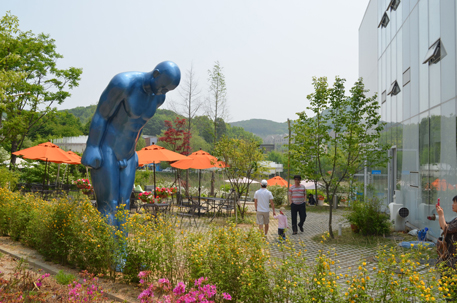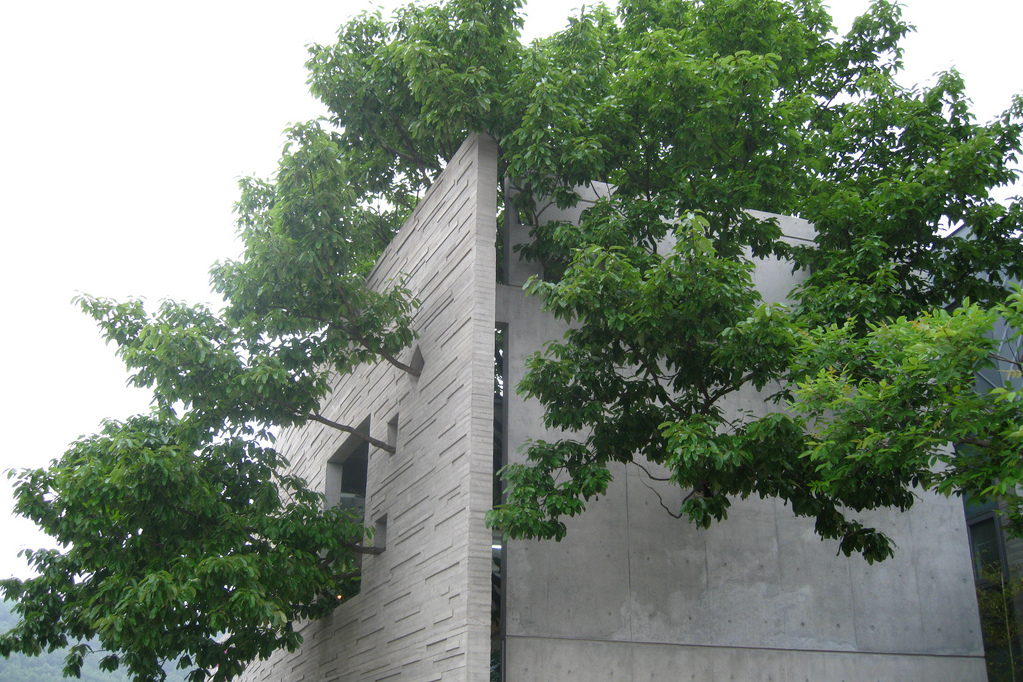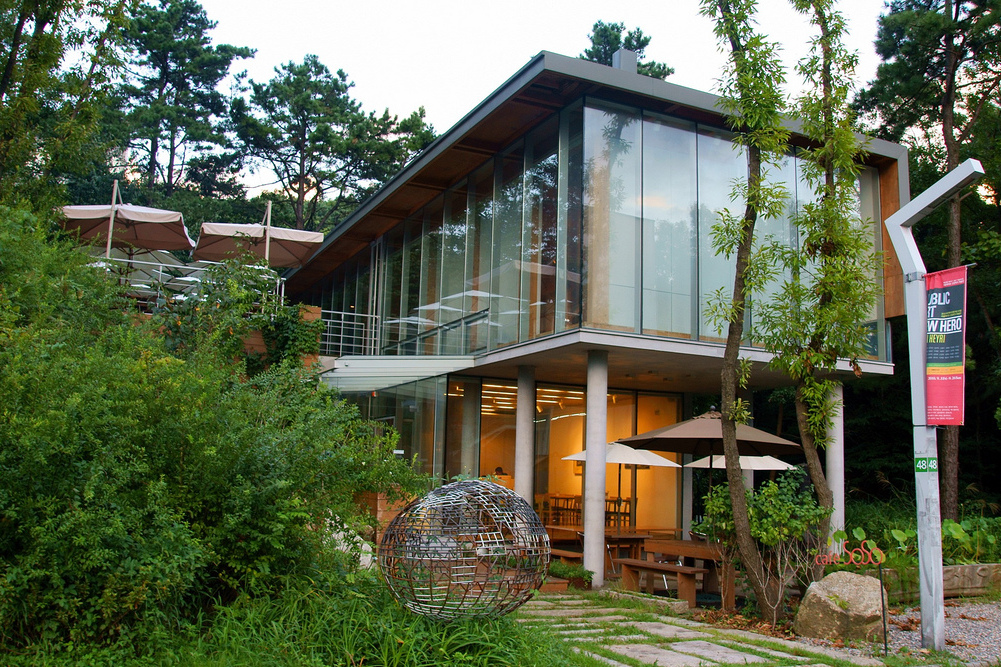
Heyri is an unlikely spot for a bohemian cultural centre -- along the banks of the barbed wire-lined Han River and within sight of the armed checkpoint watchtowers -- but the galleries, cafes and bookstores exhibit work from some of the finest artists and architects from Korea and abroad.
The initial idea for Heyri was developed in 1995 by a Seoul-based arts collective that wanted a place in the countryside where its 380 members could reside and create art as a refuge from the big city. Two years later a committee was formed and work began on the masterplan.
“It took five years to decide on a location for the art village,” said the sprightly, wispily-goateed photographer and founding Heyri member Ansoo Lee. “We chose Heyri as it is a clean place, right in nature. There are no factories in North Korea just across the border so we knew there would be clean air. We have dreams of unification one day and then Heyri will be the centre of the Korean peninsula – close to Seoul and even closer to North Korea.” The village stands as a symbol of peace in a region known for anything but that.
Today Heyri makes for a pleasant escape from the hustle and bustle of Seoul, and walking through the village is like being transported to the pages of an architectural magazine. Modern concrete angular buildings designed by the country’s top architects sit against an unobstructed backdrop of forest and hills, and the tallest building is no taller than a fewer stories high, as mandated by the committee. Each building conforms to the village’s main principle of existing in harmony with nature. As you wander the winding paths, passing streams, native flowerbeds, ponds and footbridges, there are galleries, cafes, bookstores and music halls to duck into along the way. Weekends see Korean tourists and day-trippers from Seoul walking the streets, riding bikes and taking in lattes and art. Weekdays are quieter and most places are closed on Monday.
Pick up a booklet for 2,500 South Korean won from the information counter at the entrance for profiles of all the sights, as well as a map. You will need at least a full day to explore the whole village.

Run by a well known ex-radio broadcaster, the stylish Camerata Music Hall (camerata.kr) is made for fans of classical music, and the vintage audio system spins vinyl, filling the room with Western classical and the odd pop or jazz tune. Pick a table, jot down your request with the pen and paper provided and pass it to the DJ. Entry is 10,000 won, which includes a free drink.
High ceilings, white walls and concrete floors give the White Block Art Center a chic industrial minimalist feel. It has six large exhibition rooms over three floors, with changing exhibitions that showcase global contemporary art. Past exhibitions have covered themes like 'What is Koreanness?' The attached cafe and courtyard overlooking Heyri pond is a good spot to sit and admire the scenery.
With other galleries in Tokyo and Seoul, the Heyri outpost of the Keumsan Gallery (keumsan.org) is devoted to showcasing diverse Asian contemporary art, and has represented major artists like Korea’s Lee Ufan, whose work also appears at New York’s MoMA and Tate Modern in London.
At the Chocolate Design Gallery (chocolategallery.co.kr), the exhibitions of chocolate sculptures usually run in winter months to avoid melting, but outside of the season the gallery hosts courses on how to make decadent truffles. Stop by for one of their rich smooth iced chocolate drinks and to taste-test the truffles.
Part cafe, part vintage furniture showroom, Homeo is a popular spot to grab a Korean steak sandwich and a coffee while lounging on chesterfields set around industrial cabinets and dangling chandeliers.
Attached to the Keumsan contemporary art gallery, Café Blume (heyriblume.com) creates its own edible art, such as rice wrapped in lotus leaf, and abalone porridge, along with a selection of drip coffees.

Slow down your pace and take in the quiet of Heyri by staying overnight in one of the architecturally designed guesthouses.
The peaceful Gallery SoSo (gallerysoso.com) guesthouse is set among the trees and attached to the intimate Gallery SoSo. The balcony is perfect for resting and reflecting after a day of gallery hopping in the village. The guesthouse set high up in the trees holds four to eight people and is available for group bookings only at 340,000 won per night.
The Motif #1 artists’ residence and guesthouse, run by Lee and opened in 2006, is the perfect place to get inspired. Bookshelves bulging with art, encyclopaedias and travel books line the walls, along with collectibles and the artist’s own photographs. The building was designed by an up-and-coming architect at the time, Minsuk Cho, who is now one of the world’s foremost architects. There are two rooms and a suite that has its own bathroom and kitchen. Rates start at 140,000 won per night.
A leisurely stroll is the best way to get around the village but if you are short on time there are bicycles for hire near the Gate 1 entrance (5000 won for one hour, 7000 won for two hours or 13,000 won for the day).
From Seoul, take the subway line 2 to Hapjeong Station and exit 2 for bus 2200 to Heyri (every 15 minutes). On weekends you can’t miss the bus stop; just look for the long queues of shoppers getting on for the nearby Paju discount outlets. Try to get a seat on the left-hand side going there to get a glimpse of the razor wire and checkpoints.